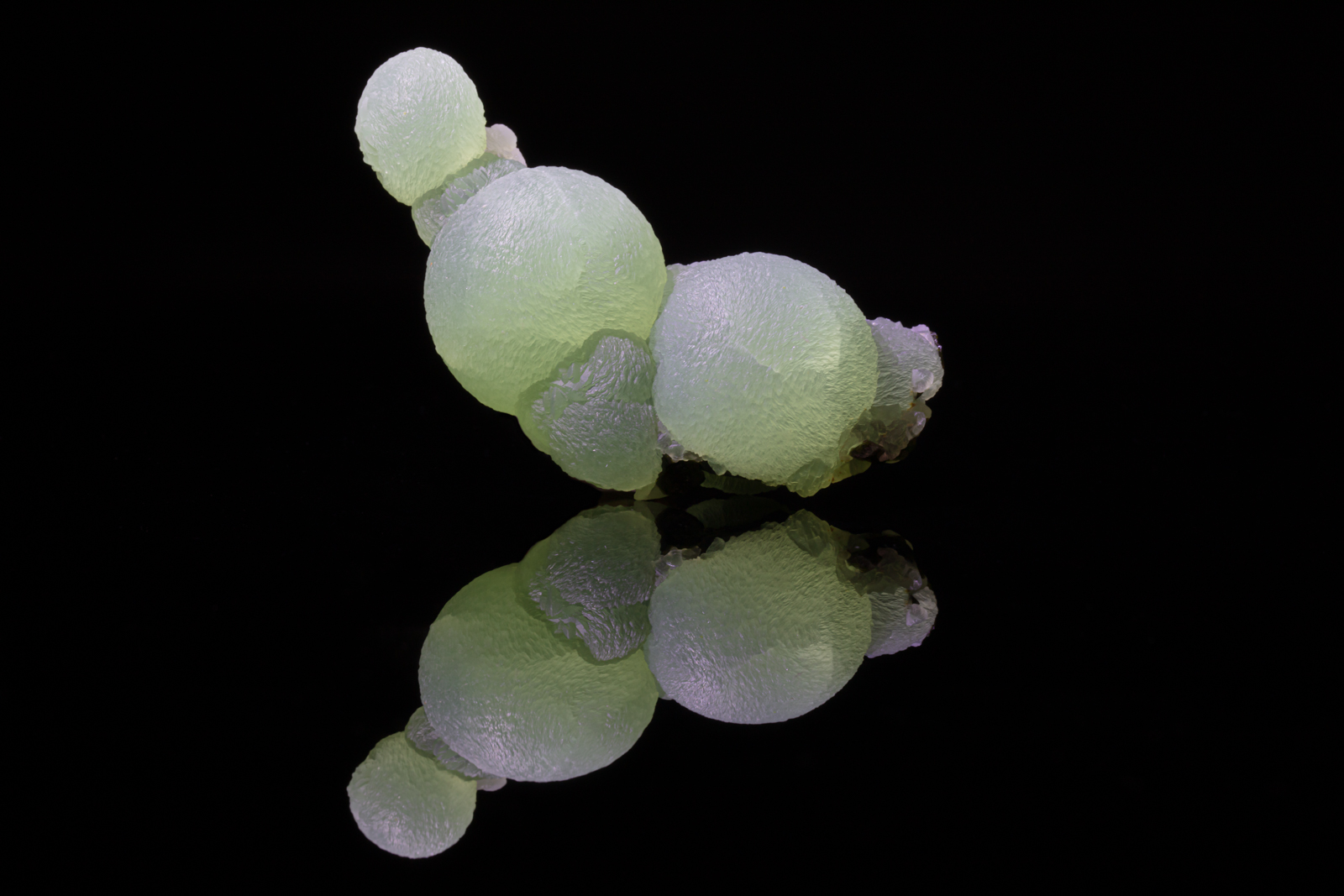Prehnite
Formula: Ca2Al2Si3O10(OH)2
Species: Silicates – (Innosilicates)
Colour: Colourless to gray to yellow, yellow-green or white
Lustre: Vitreous, Pearly
Hardness: 6 – 6½
Specific Gravity: 2.8 – 2.95
Crystal System: Orthorhombic
Name: Named in 1788 by Abraham Gottlieb Werner in honor of the Dutch Colonel, Hendrik von/van Prehn (1733 -1785), who is credited with discovering the mineral in 1774 at the Cape of Good Hope in South Africa. Von Prehn was a governor of Cape of Good Hope (1779-1780) until he was dismissed. He was a naturalist and mineral collector who brought the first specimens of his namesake mineral to Europe. A considerable mystique and folklore have surrounded Prehn and prehnite. It has been claimed that prehnite was the first mineral named for a person.
Type Locality: Karoo dolerites, Cradock, Inxuba Yethemba Local Municipality, Chris Hani District Municipality, Eastern Cape – South Africa
The Al analogue of ferriprehnite. Both seem to belong to the prehnite group that also likely contains amstallite. A relatively common calcium alumosilicate occurring in low-temperature hydrothermal environments. Colourless brick-shaped crystals may be confused with stellerite.


 Copyright Charles Camarda - www.camardavisualstudio.com
Copyright Charles Camarda - www.camardavisualstudio.com